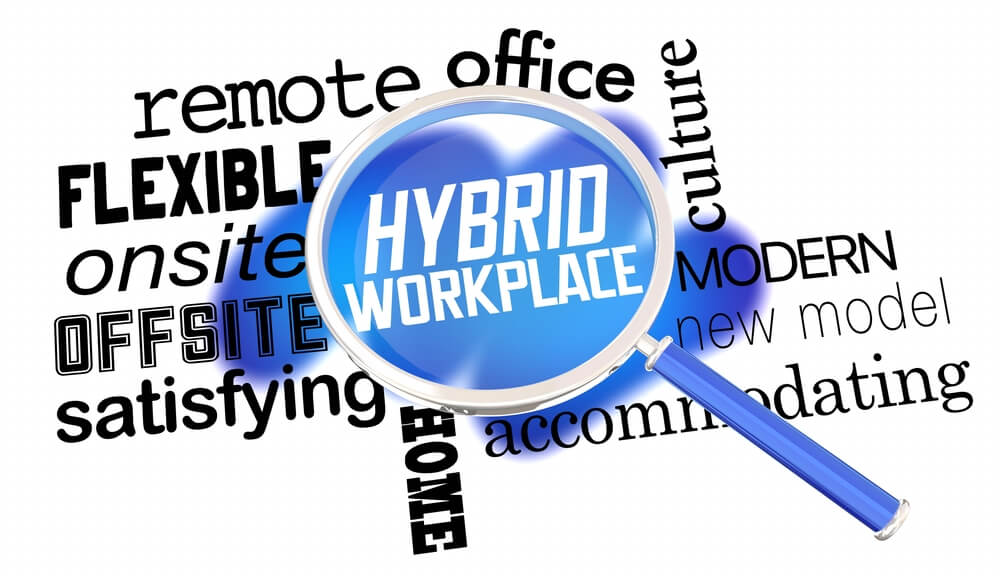Remote work combined with some in-office time is becoming the new normal as the world continues to recover from the days of quarantine. The hybrid work model provides flexibility and opportunity not possible in the 100% in-office or 100% remote work situations. It is a win-win solution, satisfying the employees who want to spend more time at home and those who desire face-to-face interactions. However, it can present unique challenges.
As with any new endeavor, it takes a systematic approach to anticipate roadblocks and design the optimal solution. Partnering with a reliable HR outsourcing service helps create a desirable workplace culture that proactively approaches employee well-being while balancing employer needs. Let's look at ways you can overcome the greatest challenges of a hybrid workplace.
1. Equitable Treatment
Problem: How to ensure employees working remotely have the same opportunities for career advancement, recognition, and communication as those working in person.
Solution:
- Develop clear guidelines and policies - Your employees aren't mind readers. They are individual, self-motivated professionals who will create their own schedules and work habits if clear expectations aren't provided. As an employer, it is your responsibility to outline expectations and guidelines regarding communication, work hours, and opportunities for career advancement for both remote and in-person workers.
- Provide training - Managers and employees need to understand the policies and special considerations of hybrid work. Train your managers to communicate with remote employees, keep them engaged, and ensure they are included in important meetings.
- Set up regular check-ins - Out of sight can quickly become out of mind. Finding ways to keep remote workers engaged in day-to-day activities is critical to ensure they are an active part of the team.

2. Technology and Equipment
Problem: A hybrid workplace requires employers to provide the right technology and equipment to ensure remote workers can access necessary resources and collaborate effectively.
Solution:
- Conduct a technology audit - Assess employee technology needs, such as laptops, video conferencing software, or collaboration tools. Identify the equipment and software needed to do their job effectively through surveys or individual interviews.
- Determine the budget - Setting your budget beforehand helps you determine whether you can afford to provide all the necessary equipment or require employees to bring their own devices (BYOD). Just be aware that BYOD can introduce additional security, compatibility, and performance challenges that may present new costs when prioritizing what you can afford to provide.
- Choose the right equipment- Your tech audit should cover the requirements for any software your employees must so that you can choose the best equipment for your business needs and budget.
- Establish a policy for use - Make sure your policies are clear on how equipment should be used, who is responsible for maintaining it, and what to do in case of technical issues.
- Monitor and maintain - Your procedures should include routine monitoring of equipment and software provided to employees to ensure it works properly and is used appropriately.
3. Work-Life Balance
Problem: Remote work can lead to an "always on" culture where employees feel pressure to work outside of regular business hours.
Solution:
- Educate employees on the importance of work-life balance - Your employees want to do a good job, and remote workers often fear that they won't be viewed as committed if they don't work more hours. When you teach them that you don't expect the "always on" culture, employees are more willing to improve their work-life balance without fear that it will hurt their career advancement prospects.
- Set realistic goals - Know your staff's workload and working hours. If an employee is saddled with too much work, they have no choice but to work after hours to complete it. If you see that your workers are routinely logging in or submitting work after hours, you need to discuss how to resolve the issue before they burn out.

Hybrid Workplaces Work
Implementing a high-functioning hybrid workplace is possible. It takes gathering vital information from employees and subject matter experts on technology, security, and human resources. Then it takes time, dedication, and periodic reviews to ensure that it is working optimally for all parties.
Despite the challenges, hybrid workplaces work. In-office and remote work offers the best of both worlds. It can help you create a desirable workplace culture that serves to attract new employees and help retain your top performers. However, you must overcome the challenges for a hybrid workplace to be successful.



